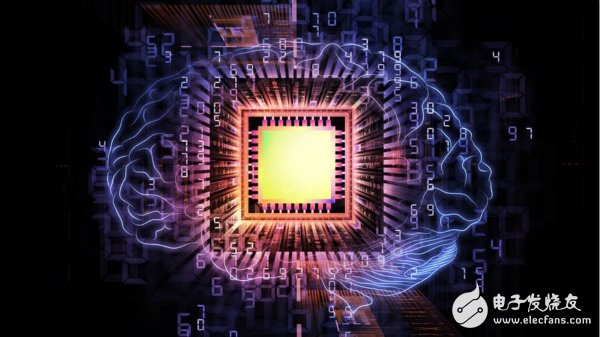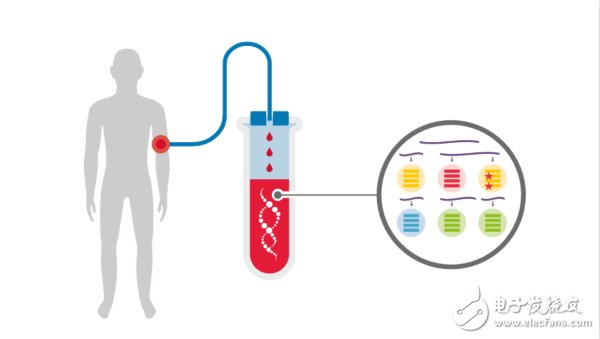Since 2001, the MIT Science and Technology Review has published “Top 10 Breakthrough Technologies†every year, namely TR10 (Technology Review 10), and predicts its potential for large-scale commercialization and its significant impact on human life and society.
These technologies represent the development frontier and future development direction of the current world science and technology, and reflect the new characteristics and new trends of the world's scientific and technological development in recent years, and will lead the research direction for the future. Many of these technologies have already entered the market, leading the development of industrial technology, and greatly promoting economic and social development and technological innovation.
As Jason PonTIn, editor-in-chief of the MIT Technology Review, said, the definition of breakthrough technology is very simple, that is, it can bring people high-quality technology solutions. Some technologies are the crystallization of engineers' genius ideas, while others are the masters of many attempts by scientists to solve problems that have long plagued them (such as deep learning). The purpose of the selection of “Top 10 Breakthrough Technologies†is not only to show people new innovations, but also to emphasize that human intelligence has enabled these innovative technologies.
Therefore, the arterial network will screen for scientific breakthroughs in the medical field from 2012 to 2016. Due to the rapid change of technology, it only combed within the last 5 years. In view of the length of the article, it will be divided into two parts. In the "Best Technology in the 14 Major Medical Fields Selected by MIT Technology Review (I)" , we have introduced seven scientific and technological breakthroughs in the medical field in the past five years. Article. These technologies are created to solve problems and will greatly expand the potential of human beings. They may also change the face of the world and deserve special attention in the future.
8. Neuromorphic chip (2014)
Neuromorphic chips can directly mimic the behavior of the brain
The chip with the microprocessor is more like the brain than the traditional chip, it simulates the state of the human brain.
Maturity: no major breakthroughs
Breakthrough point: An alternative design for computer chips that can simulate the process of brain processing information in real time, helping scientists to create cognitive systems that interact with the surrounding environment in real time and promote the development of artificial intelligence technology.
Importance: Traditional chips have reached performance limits.
Major players in the field: Qualcomm, IBM, HRL Laboratories, Human Brain Project
The concept of neuromorphic chips goes back decades. In 1990, Carver Mead, Emeritus Professor of the California Institute of Technology, gave its definition in a paper. However, it has only been known since Qualcomm developed a robot called "Pioneer". Pioneer robots use only a smart phone chip, which simulates the state of the human brain and runs specially-made software. It can identify objects that have not been seen before, classify them according to the similarity of related objects, and put different items. The correct location in the room.
The human brain has billions of neurons and hundreds of billions of synapses, which can simultaneously process visual, audio and other signals. The neuromorphic chip simulates the ability of the human brain to process multiple data simultaneously in the chip. Neurons can change the connection to other neurons depending on changes in images, sounds, or other signals. Therefore, these neuromorphic chips mimic the neural network of the human brain and can realize some functions of the human brain. They enable tasks that take decades to complete in the field of artificial intelligence, allowing machines to understand the world and interact with the world like humans.
Some universities and research institutions are also trying to implement these features, such as IBM Labs and HRL Labs. The two have spent $100 million to develop neuromorphic chips for the US Defense Advanced Research Projects Agency. In addition, the European Brain Project, in conjunction with researchers at the University of Heidelberg and the University of Manchester, also spent 100 million euros to study neuromorphological projects. According to Dharmendra Modha, a researcher at IBM Labs, the chip allows blind people to identify objects and provide audio cues through visual and audio sensors. The health monitoring system can detect vital signs, identify potential risks early, and personalize patients. treatment method. Medical sensors and equipment can track the patient's vital signs, take medical measures according to time, learn to adjust the dose, and even find the disease early.
In terms of cost, Qualcomm hopes that product design will be more practical than performance. This means that Qualcomm's neuromorphic chips are still being developed on digital chips, which is simpler and easier to produce than analog chips. The analog chip is going to complete the simulation of the brain, while Qualcomm's chip simulates the behavior of the brain. For example, neuromorphic chip programming, the way data is transmitted simulates the electronic impulses that the brain processes when dealing with sensory data. For years, scientists have been trying to further explore the circuit architecture of neuromorphology. The difficulty lies in how to deal with the overlap between neurons and silicon—synapses and logic gates, even using special materials such as graphene to solve this problem. One problem is that it takes time for the product to be completely commercial.
9. Miniature 3D printing (2014)
The goal of micro 3D printing is to print out biological tissue
Prints biological parts with different types of materials, greatly expanding the range of printing
Maturity: not mature yet
Breakthrough point: Use a variety of materials to print things, such as printing blood vessels with biological tissue
Importance: Promote the production of artificial organs and novel semi-machine parts
Major players in the field: Jennifer Lewis (Harvard University), Michael McAlpine (Princeton University), Keith MarTIn (Cambridge University)
The 3D printing concept now seems to be common, and the printed materials are limited to common materials such as plastic or synthetic metal, but if you can print cells, semiconductors or other biological tissues, the application width is different.
Jennifer Lewis, a materials scientist at Harvard University, is the industry leader in the study of microscopic 3D printing mechanisms and methods that combine the functions and shapes of objects. Lewis and her students showed their technology to print tiny electrodes and the components needed for tiny lithium-ion batteries, as well as print plastic patches for athletes that contain a variety of sensors that can detect concussions and measure The degree of harm. What is striking is that her team printed biological tissue containing complex blood vessels. In order to accomplish this goal, various types of cell "ink" have to be developed, as well as matrix materials that support the tissue matrix. This technology has successfully solved a major problem in the manufacture of artificial tissues for clinical testing of drugs or human organ transplants: how to survive the cells in the vascular system.
Princeton University's research team successfully printed bionic ears, combining biological tissue and electronic components; researchers at the University of Cambridge also printed complex eyeballs composed of retinal cells. So, how tiny biological tissue can you print? The Lewis team installed a 3-D printer with a microscope to accurately print structures as small as 1 micron (about 10 microns in human red blood cells), which also challenged material requirements, such as when cells were forced through a print nozzle. It is fragile and easily destroyed. The secret she creates is that it allows them to be printed "ink" in the same manufacturing process. Each "ink" is a different material, but they can all be printed at room temperature and ejected from the nozzle under pressure. When you are always able to maintain a certain shape, it is a bit like a toothpaste.
Before joining Harvard University, Lewis has been working on 3D printing technology at the University of Illinois for more than 10 years. She has used ceramics, metal nanoparticles, polymers and other non-biological materials. The ability to add blood vessels to 3D printed human tissue is an important step in the manufacture of artificial organs. However, it is clear that dealing with cells is really complicated. We are far from the normal liver or kidney in 3D.
10. Liquid biopsy (2015)
Liquid biopsy can help early screening of certain cancers
Rapid DNA sequencing for simple blood testing of cancer
Maturity: Wide application
Breakthrough point: blood test found early cancer
Importance: Cancer kills about 8 million people around the world every year
Major players in the field: Lu Yiming, Illumina, and Chinese University of Hong Kong, Bert Vogelstein
Professor Lu Yuming was associated with non-invasive prenatal diagnosis. As early as 1997, his team found that free fetal DNA was present in pregnant women's plasma, and later produced a simple Down's syndrome test method. Not only that, Professor Lu is competing with laboratories and medical institutions around the world, such as Johns Hopkins University, to develop cancers based on simple blood tests (such as the most diseased lung cancer, 40% of Chinese lung cancer patients in a gene) Mutation of EGFR, which will give them the opportunity to acquire new targeted drugs) screening techniques, ie liquid biopsies.
Although the cost of predicting cancer through DNA testing is still high, with the continuous development of sequencing technology, it can quickly decode millions of loose DNA fragments in the blood, compared with the reference map of the human genome, cancer. Early screening will become simpler, cheaper, and more widely used. The commercial benefits of liquid biopsy have also recently exploded. According to Jay Flatley, CEO of sequencing giant Illumina, the market for liquid biopsy is at least $40 billion. He said the technology could be the most exciting breakthrough in cancer diagnostics and said Illumina will begin providing researchers with liquid biopsy kits to help find early signs of cancer.
In addition, in addition to being used for cancer screening (which is currently not commonly used in any cancer), liquid biopsies can also be used to help people fight disease. Doctors can select the appropriate drug and treatment plan based on specific DNA mutations that drive cancer development. The cause of cancer is quite complex, and researchers must systematically understand their cases so that liquid biopsy can really save lives. Liquid biopsies are now widely used, especially in cancer testing, but their role in improving the quality and efficacy of testing is currently unclear.
Sterilization Card Bags
Guangzhou Ehang Electronic Co., Ltd. , https://www.ehangmobile.com